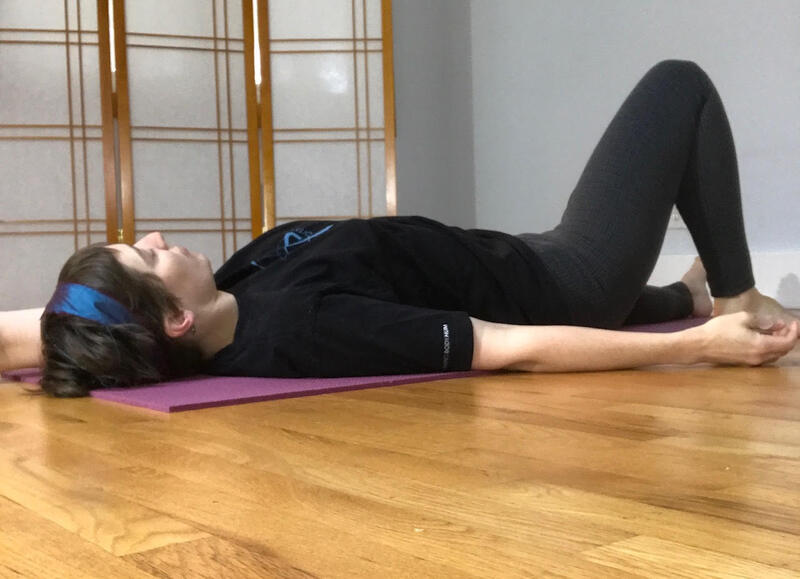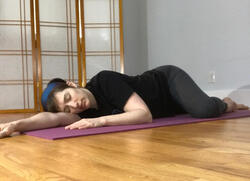|
This class is an exploration of various positions, and how we send the breath into the chest, and into the abdomen (an anatomical impossibility, but a useful image) --sometimes called seesaw breath in other lessons. The recording is edited for this evening (I've taken out the 5 minutes when we were off line), and is posted below in audio only. Meanwhile, here is an explainer video to help you understand a few things that are going on when we breathe, and a few reasons why we would want to do a lesson that takes on the disturbances that many of us have: tightness in the intercostal muscles, for example, or only breathing in the chest or the abdomen. What this class does not do is teach you how to breathe: why? Because Feldenkrais classes give you many experiences to learn within, so that what emerges is an organization that YOU choose. This avoids people mistakenly taking on one way, thinking it is the right way, and adapting that one way to meet all situations. After all, we need many ways to breathe, an many shapes to be in to meet all the demands of our lives. One right way isn't enough. Knowing what is possible, and trying many things, is what feeds our nervous system's bank of choices to choose from, building wise body-minds. If you would like to revisit the ideas of this lesson, here is an idea: 1. Try the lesson in your bed. 2. Try one position that you remember, and experiment with the seesaw breathing maneuver slowly, then quickly. Hint: avoid arching your back when breathing into your abdomen. If you feel a bit sore in your back, it’s a possibility that you are doing something unnecessary there. Try placing one of your hands behind your low back to feel what is going on as you do that. See if you can soften there. The audio for this is on Patreon: Heather Danso Emanuel GCFP | Creating Movement lessons & puzzles for health and wellness | Patreon
0 Comments
Today's lesson is a balancing of the muscles that fold us, and the muscles that hold us up - in other words, we are organizing, discerning, and coordinating the muscles along the spine. That being said, many things happen: the diaphragm is addressed in relation to folding and twisting. In twisting, there are elements of side bending, of curling, and of backbending, so it is a lovely way to actually lower the unnecessary work along the spine.
Did you feel taller? Did your head feel on differently? Did you find more freedom in your thoracic spine and did that impact your ability to twist and to roll your head? This lesson is now on Patreon This is a fusion of two ATM lessons. Please read the HOW TO to the right.
Lessons that focus on the breath can offer us systematic changes that may seem unrelated to the focus of the lesson. Here, you'll work with some movement, and some breath--focused on the sensations that emerge in various positions. Trying on different ways of moving and breathing can help our nervous systems adapt and respond to the moment, with new and detailed information that we feed our brains through the power of our attention! Remember to read the How-to Less is more. If you have any current concerns, or aren't sure on the instructions, try imagining the moves first, and do so little you barely sense movement. Direction is always in relationship to you. That means, up, is in relation to your head--lying down, up is towards the wall above your head. In standing, up is towards the ceiling/sky. Two links, this week, since I paused the recording and restarted. I'll combine them again for you later.
An exploration based on the Alexander Yanai Awareness Through Movement Lesson 179. How does your breath impact your movement? How does your movement teach you new possibilities?
We begin already lying on the floor. Curious? Review how to do an ATM before you try one!
The scan in the beginning is in standing! Go easy. Do less. Feel more. |
HOW-TORecorded at public classes, All audio classes are now on Patreon. Please read the HOW-TO before doing a lesson. Archives
April 2024
Categories
All
|
||||||||||||||
Heather Emanuel, GCFPSchedule Appointment
|
|



 RSS Feed
RSS Feed